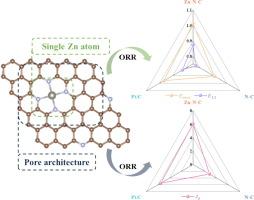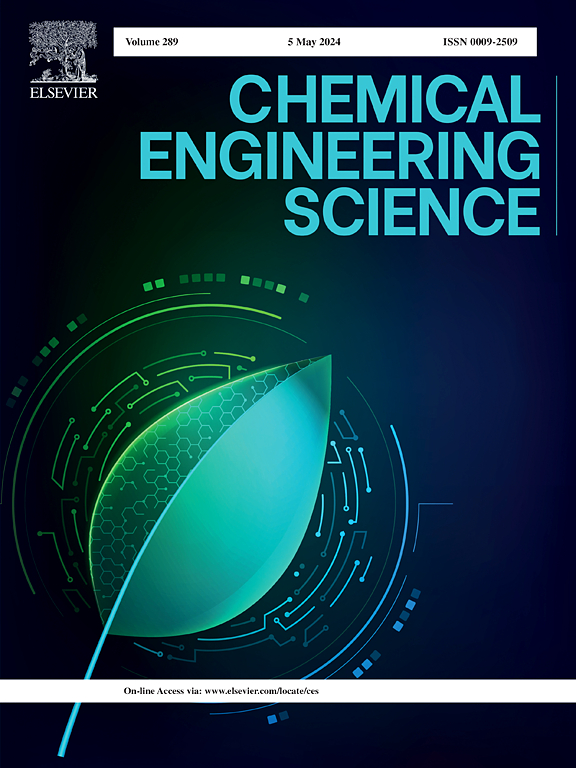单个锌原子和分层孔结构共同提高了氧还原电催化性能
IF 4.1
2区 工程技术
Q2 ENGINEERING, CHEMICAL
引用次数: 0
摘要
本文章由计算机程序翻译,如有差异,请以英文原文为准。


Single Zn atoms and hierarchical pore architecture jointly improve oxygen reduction electrocatalysis
Investigations on high-efficiency single atom catalysts (SACs) for oxygen reduction reaction (ORR) have aroused widespread concern, particularly for transition metals. However, the inherent catalytic performance is greatly affected by metal types and pore structure of carbon substrates. Herein, a non-noble Zn-based single-atom electrocatalyst (Zn-N-C) is proposed and confirmed that atomically dispersed Zn is anchored onto the amply micro/mesoporous support decorated with nitrogen doping. Benefit from the pore structure and single-atom site, Zn-N-C reveals superior ORR behavior with high E1/2 (0.874 V) and low Tafel slope (68.8 mV dec-1) in 0.1 M KOH, markedly surpassing state-of-the-art Pt/C. EXAFS and DFT results show that Zn-N4 coordination configuration decreases the free energies of oxygen-containing intermediates (*OOH and *OH) and the theoretical overpotential is as low as 0.45 eV. As a result, the self-assembled Zn-air battery performs well in peak power density (226.4 mW cm−2), specific capacity (746.4 mAh g−1) and long-term durability.
求助全文
通过发布文献求助,成功后即可免费获取论文全文。
去求助
来源期刊

Chemical Engineering Science
工程技术-工程:化工
CiteScore
7.50
自引率
8.50%
发文量
1025
审稿时长
50 days
期刊介绍:
Chemical engineering enables the transformation of natural resources and energy into useful products for society. It draws on and applies natural sciences, mathematics and economics, and has developed fundamental engineering science that underpins the discipline.
Chemical Engineering Science (CES) has been publishing papers on the fundamentals of chemical engineering since 1951. CES is the platform where the most significant advances in the discipline have ever since been published. Chemical Engineering Science has accompanied and sustained chemical engineering through its development into the vibrant and broad scientific discipline it is today.
 求助内容:
求助内容: 应助结果提醒方式:
应助结果提醒方式:


